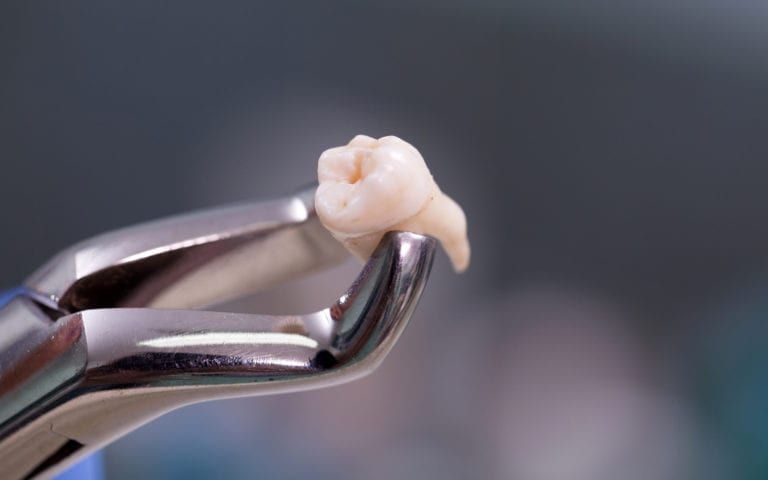Two Types Of Dental Extraction

While many of us look forward with dread at the prospect of having a tooth extracted, it’s a very common procedure. Of all adult Americans, nearly 74% have had to have an extraction performed at some point in their lives. While every extraction is different depending on which tooth needs removing and the patient’s specific needs, we can broadly sort them into two different categories. In this article, we’ll be explaining the two basic types of dental extraction and the circumstances which call for them.
First: Why Would You Need An Extraction?
Perhaps we’re getting ahead of ourselves. Before we talk about the type of extractions, it may be wise to talk about the reasons one may be required. Contrary to what you may expect, an extraction is the last-ditch effort of a dentist trying to save your oral health. Before they resort to pulling your tooth, they’ll do everything they can to save that tooth, using a variety of restorative and prophylactic treatments to do so.
Regular professional cleanings, scaling and root planing, restorations such as crowns and fillings, and the much-maligned root canal are all going to be considered before extraction becomes an option. Only when no other option is available, and the tooth is beyond saving will our dentists recommend an extraction.
Simple Extractions
In spite of their best efforts, sometimes, an extraction is simply unavoidable. When this happens, the first form of extraction your dentist is going to consider is a simple extraction. This procedure only takes a few moments and involves the use of a tool called an elevator and a specialized pair of forceps. Patients who have a simple extraction performed will be given a local anesthetic to ease any discomfort. Perhaps unexpectedly, the amount of time you spend waiting for the anesthetic to kick in will generally be longer than it takes to actually perform the extraction. Afterward, the socket will be packed with cotton, and you’ll be on your way.
Surgical Extractions
Surgical extractions are the exception to the rule, only used when a simple extraction isn’t possible due to the circumstances of the patient’s oral health. This can be due to a number of factors, including the location of the tooth that needs to be extracted. Surgical extractions are the most common for wisdom teeth, but can also be used in any situation where the tooth isn’t able to be properly manipulated with forceps. In some cases, a simple extraction can result in the crown of the tooth breaking off. When this happens, a surgical extraction may be necessary to get the rest of the roots out of the jawbone. Surgical extractions are always done under general anesthesia, and the patient will require help getting home afterward.
Want to know more about dental extractions? You can schedule an appointment at the Sunset Dental Group in Santa Ana, CA. Our team of dental experts will help you prepare for your first appointment and answer any questions you may ask about improving your dental health. We look forward to welcoming you to our dental patient family!

Recent Comments